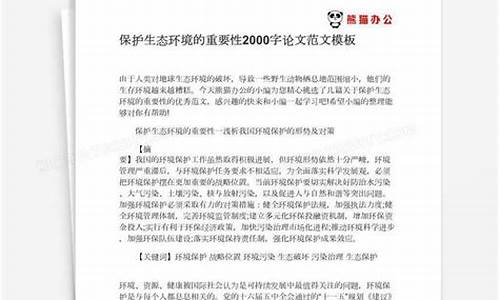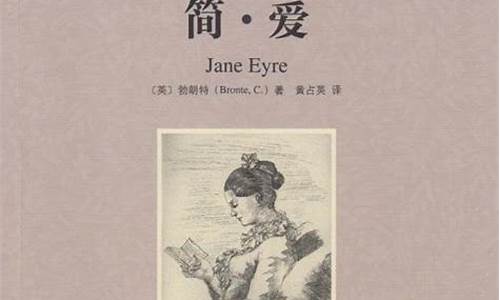七年级上册英语书_七年级上册英语书电子版
随着科技的发展,七年级上册英语书的今日更新也在不断地推陈出新。今天,我将为大家详细介绍它的今日更新,让我们一起了解它的最新技术。
1.???꼶?ϲ?Ӣ????
2.新目标七年级上册英语笔记
3.英语书七年级上册单词表读
4.请问如何下载《人教版七年级上册英语》的电子版书籍呢?
5.上海市初中英语用的是哪一版的教材?
6.七年级上册英语第51页语法焦点在哪里

???꼶?ϲ?Ӣ????
《外研版初中英语七年级英语上册电子课本.pdf》百度网盘资源免费下载链接: /s/1U11qLlx9NNIPogHQ_Ko43g
?pwd=zd84 提取码: zd84外研版初中英语七年级英语上册电子课本
新目标七年级上册英语笔记
七年级上册英语第99页人教版读Unit9。Unit9单词朗读(第101-102页)Unit8单词朗读(第100-101页)Unit7单词朗读(第100页)Unit6单词(第99-100页)Unit5单词(第98页)。
英语书七年级上册单词表读
一. 词汇
⑴ 单词
1. 介词:in, on, under, behind, near, at, of
1). in表示"在……中", "在……内"。例如:
in our class 在我们班上
in my bag 在我的书包里
in the desk 在桌子里
in the classroom 在教室里
2). on 表示"在……上"。例如:
on the wall 在墙上
on the desk 在桌子上
on the blackboard 在黑板上
3). under表示"在……下"。例如:
under the tree 在树下
under the chair 在椅子下
under the bed 在床下
4). behind表示"在……后面"。例如:
behind the door 在门后
behind the tree 在树后
5). near表示"在……附近"。例如:
near the teacher's desk 在讲桌附近
near the bed 在床附近
6). at表示"在……处"。例如:
at school 在学校
at home 在家
at the door 在门口
7). of 表示"……的"。例如:
a picture of our classroom 我们教室的一幅画
a map of China 一张中国地图
2. 冠词 a / an / the:
冠词一般位于所限定的名词前,用来署名名词所指的人或事物。冠词有不定冠词和定冠词两种。不定冠词有两个形式,即a和an。a用在以辅音音素开头的词前,如a book; an用在以元音音素开头的字母前,如an apple.
a或an与可数名词单数连用,泛指某类人或某物中的一个。
This is a cat.
这是一只猫。
It's an English book.
这是一本英语书。
His father is a worker.
他的爸爸是个工人。
the既可以用在可数名词前,也可以用在不可数名词前,表示某个或某些特定的人或事物,也可以指上文提到过的人或事物。
Who's the boy in the hat?
戴帽子的男孩是谁呀?
------ What can you see in the classroom?
------ I can see a bag.
------ Where's the bag?
------ It's on the desk.
------- 你能在教室里看到什么呀?
------ 我能看见一个书包。
------ 书包在哪呀?
------ 在桌子上。
3.some和any
①在肯定句中用some.例如:
There are some books on the desk.桌子上有一些书。
Lucy has some good books露西有一些好书。
②在疑问句和否定句中用any。例如:
Is there any ink in your pen?你的钢笔里有墨水吗?
Do you have any brothers and sisters?你有兄弟姐妹吗?
There isn't any water in the glass.杯子里没有水。
⑵记住它们的特殊用法。
①some亦可用于表示盼望得到对方肯定的答复或表示建议、委婉请求的疑问句中,这一点我们不久就会学到。例如:
Would you like to have some apples?你想吃苹果吗?
②any也可用于肯定句中,表示"任何的"。例如:
Any one of us can do this.我们当中任何一个都能做这个。
some 和any的用法是经常出现的考点,希望大家能准确地掌握它们的用法。
4.family
family看作为一个整体时,意思是"家庭",后面的谓语动词be用单数形式 is ;如把family看作为家庭成员时,应理解为复数,后面的谓语动词be应用are。
My family is a big family. 我的家庭是个大家庭。
My family are all at home now. 我的家人现在都在家。
Family强调由家人组成的一个集体或强调这个集体中的成员。home指个人出生、被抚养长大的环境和居住地点。 house指"家"、"房屋",侧重居住的建筑本身。
His family are all workers. 他的家人都是工人。
My home is in Beijing. 我的家在北京。
He isn't at home now. 他现在不在家。
It's a picture of my family. 这是一张我全家的照片。
5. little的用法
a little dog 一只小狗,a little boy 一个小男孩。little常用来修饰有生命的名词。
*但little还可表示否定意义,意为"少的",加不可数名词。
There is little time. 几乎没时间了。
There is little water in the cup. 杯中水很少。
⑵ 词组
on the desk 在桌子上
behind the chair 在椅子后
under the chair 在椅子下面
in her pencil-box 在她的铅笔盒中
near the door 在门附近
a picture of a classroom 一个教室的
look at the picture 看这张
the teacher's desk 讲桌
a map of China 一张中国地图
family tree 家谱
have a seat 坐下,就坐
this way 这边走
二. 日常用语
1. Come and meet my family.
2. Go and see. I think it's Li Lei.
3. Glad to meet you.
4. What can you see in the picture?
I can see a clock / some books.
5. Can you see an orange?
Yes, I can. / No, I can't.
6. Where's Shenzhen?
It's near Hong Kong.
7. Let me see.(口语)让我想想看。
see 在这是"明白、懂了",不可译作"看见"。例如:
8. Please have a seat.
seat表示"座位",是个名词。have a seat表示"就坐",也可以说take a seat, 和sit down的意思相同。
三. 语法
1. 名词所有格
名词如要表示与后面名词的所有关系,通常用名词所有格的形式,意为"……的"。一般有以下几种形式:
(1). 一般情况下在词尾加"'s"。例如:
Kate's father Kate的爸爸
my mother's friend 我妈妈的朋友
(2). 如果复数名词以s结尾,只加"'"。例如:
Teachers' Day 教师节
The boys' game 男孩们的游戏
(3). 如果复数名词不以s结尾,仍加"'s"。例如:
Children's Day 儿童节
Women's Day 妇女节
(4). 表示两个或几个共有时,所有格应加在后一个名词上。例如:
Lucy and Lily's room Lucy 和Lily的房间
Kate and Jim's father Kate 和Jim的爸爸
动物和无生命事物的名词的所有格一般不在词尾加"'s",而常常用介词of的短语来表示。
a map of China 一幅中国地图
the name of her cat 她的猫的名字
a picture of my family 我的家庭的一张照片
the door of the bedroom 卧室的门
2. 祈使句
祈使句主要用来表示说话人的请求、命令、建议、叮嘱等意图。祈使句一般不用主语,读时用降调。为使语气委婉、礼貌,常在句首或句尾加please 。在句尾时,please前多用逗号。
(1). 祈使句肯定形式的谓语动词一律用动词原形。
Go and see. 去看看。
Come in, please. 请进。
(2). 祈使句的否定形式常用don't于句首。
Don't look at your books. 不要看书。
Don't play on the road. 不要在马路上玩。
3. There be 的句子结构
There be是一个"存在"句型,表示"有"的意思,
肯定句的形式为:There be + 名词(单数或复数)+地点状语或时间状语。
be动词单复数的确定,看be后边第一个名词,当所接主语为单数或不可数名词时,be动词形式为is;当所接主语为复数名词时,be动词为are;当be动词后接两个以上主语时,be动词与最临近主语保持数上的一致。意思为"某地有某人或某物"。如:
There is an eraser and two pens on the desk. 桌子上有一块橡皮和两支钢笔。
There are two pens and an eraser on the desk. 桌上有两支钢笔和一块橡皮。
(1)there be的否定句,即在be的后面加上not。
否定形式为:There be + not + (any) + 名词+地点状语。
There is not any cat in the room. 房间里没猫。
There aren't any books on the desk. 桌子上没书。
(2)there be句型的疑问句就是将be提到句首:Be there + (any) +名词+地点状语?肯定回答:Yes, there is / are. 否定回答:No, there isn't / aren't.
---Is there a dog in the picture? 画上有一只狗吗?
---Yes, there is. 有。
---Are there any boats in the river? 河里有船吗?
---No, there aren't. 没有。
(3)特殊疑问句:How many . . . are there (+地点状语)?"某地有多少人或物?"回答用There be . . .
There's one. / There are two / three / some . . .
有时直接就用数字来回答。One. / Two . . .
---How many students are there in the classroom? 教室里有多少学生?
---There's only one. / There are nine. 只有一个。/有九个。
(4)如果名词是不可数名词,用:How much + 不可数名词 + is there + 地点状语?
How much water is there in the cup? 杯中有多少水?
How much food is there in the bowl? 碗里有多少食物?
请问如何下载《人教版七年级上册英语》的电子版书籍呢?
Unit 1
my pron. 我的
name n. 名字
is v. 是
name's = name is 名字是
clock n. 钟
I pron. 我的
am v. 是
I'm = I am 我是
nice adj. 好的;令人愉快的
to part. 用于与动词原形一起构成动词不定式
meet v. 遇见;相逢
you pron. 你;你们
what pron. & adj. 什么
what's = what is 是什么
your pron. 你的;你们的
hello interj. (表示问候)喂
hi interj. (表示问候)嗨
his pron. 他的
and conj. 和;又;而且
her pron. 她的
question n. 问题;难题;询问;疑问
answer n. 回答;答复;答案
look v. 看;望;看起来
first adj. 第一的
first name 名字
last adj. 最后的;上一个的
last name 姓氏
boy n. 男孩
girl n. 女孩
zero num. 零
one num. 一
two num. 二
three num. 三
four num. 四
five num. 五
six num. 六
seven num. 七
eight num. 八
nine num. 九
telephone n. 电话
number n. 数;数字
telephone number 电话号码
phone n. 电话
phone number 电话号码
it pron. 它
it's = it is 它是
card n. 卡;卡片
ID card 身份证
family n. 家;家庭
family name 姓氏
Unit 2
this pron. & adj. 这;这个
pencil n. 铅笔
pen n. 钢笔
book n. 书
eraser n. 橡皮;铅笔擦;黑板擦
ruler n. 尺;直尺
case n. 箱;盒;橱
pencil case 铅笔盒;文具盒
backpack n. 双肩背包
pencil sharpener 卷笔刀;铅笔刀
dictionary n. 字典;词典
that pron. & adj. 那;那个
yes adv. (表示肯定)是
no adv. (表示否定)不;不是
not adv. (构成否定形式)不是
isn't = is not 不是
excuse v. 原谅;宽恕
excuse me 请原谅(客套语,用于与陌生人搭话、打断别人说话等场合)
thank v. 感谢
OK interj. 好;不错
in prep. 用(表示方法,媒介,工具等)
English n. 英语;英文
a art. 一个(只,把,台……)
how adv. (指程度)多么;何等;怎样
do v. & aux. 做;干;构成否定句、疑问句的助动词
spell v. 拼写
baseball n. 棒球
watch n. 手表
computer n. 电脑;电子计算机
game n. 游戏
computer game 电子游戏
key n. 钥匙
notebook n. 笔记本
ring n. 环;戒指
call v. 打电话
at prep. 在……(里面或附近);在……(点、刻);以
in prep. 在……里面
the art. 表示特指的人、物、事或群体
lost v. 遗失
found v. 找回
lost and found 失物招领
please interj. (祈使句中用作请求的客套话)请
school n. 学校
a set of 一套;一副
of prep. (属于)……r
Unit 3
sister n. 姐;妹
mother n. 妈妈;母亲
father n. 爸爸;父亲
parent n. 父亲或母亲
brother n. 兄;弟
grandmother n. 祖母;外祖母
grandfather n. 祖父;外祖父
friend n. 朋友
grandparent n. 祖父(母);外祖父(母)
those pron. & adj. 那些
are v. 是
that's 那是
these pron. & adj. 这些
she pron. 她
he pron. 他
he's = he is 他是
aunt n. 姨母;姑母;伯母;婶母;舅母
son n. 儿子
cousin n. 堂(表)兄弟;堂(表)姐妹
daughter n. 女儿
uncle n. 叔;伯;舅;姨夫;姑父
picture n. 照片;
dear adj. 亲爱的(冠于信函中的称谓,以示礼貌)
for prep. 为了(表示目的或原因)
thanks for 为……而感谢
photo n. 照片;相片
here adv. 这里;在这里
Unit 4
where adv. 在哪里(疑问副词)
where's = where is 在哪儿
table n. 桌子
bed n. 床
dresser n. 梳妆台
bookcase n. 书橱;书柜
sofa n. 沙发
chair n. 椅子
drawer n. 抽屉
plant n. 植物
under prep. 在……下
they pron. 他们
they're = they are 他们是
on prep. 在……上
don't = do not 不
know v. 知道;了解
bag n. 书包;提包;袋子
math n. 数学
alarm clock 闹钟
CD abbr. 光盘
video n. 录像;视频
tape n. 录音带
video tape 录像带
hat n. 帽子
take v. 拿走;带到
thing n. 东西;物
to prep. 朝;向;至;达
mom n. 妈妈(非正式用语)
can modal v. 能;可以;会
bring v. 拿来;取来;带来
some adj. & pron. 一些;若干
need v. 需要
floor n. 地板;地面
room n. 房间
TV abbr. 电视;电视机
desk n. 书桌;课桌
Unit 5
have v. 有
soccer n. 英式足球
ball n. 球
soccer ball 英式足球
tennis n. 网球
racket n. 球拍(网球、羽毛球的)
tennis racket 网球拍
ping-pong n. 乒乓球
volleyball n. 排球
basketball n. 篮球
bat n. 球拍(乒乓球等的)
does v. & aux. 做;干;构成否定句、疑问句的助动词(动词do的第三人称单数形式
doesn't = does not 不
let v. 允许;让
us pron. 我们(we的宾格)
let's = let us 让我们;让咱们
play v. 玩;打(球)
well interj. 喔;噢;唔;这个
sound v. 听起来
good adj. 良好的;令人满意的
sport n. 运动
we pron. 我们
many adj. 大量的
club n. 社团;俱乐部
more pron. 更多的;更大的
class n. 班级;(一节)课
interesting adj. 有趣的;令人感兴趣的
boring adj. 无聊的;令人生厌的
fun adj. 令人愉快的
difficult adj. 困难的
relaxing adj. 轻松的
watch v. 观看;注视
watch TV 看电视
has v. (have的第三人单数形式)有
great adj. 美妙的;大的
collection n. 收藏品;收集物
but conj. 但是
play sports 参加体育运动或比赛
only adv. 只;仅仅
them pron. (they的宾格)他(她,它)们
every adj. 每一;每个
day n. 天;日间;白天;一日
Unit 6
like v. 喜欢
banana n. 香蕉
hamburger n. 汉堡包
tomato n. 西红柿
broccoli n. 花椰菜
French fries 炸马铃薯条;薯条
orange n. 橙子
ice n. 冰
cream n. 奶油;乳脂
ice cream 冰淇淋
salad n. 沙拉
strawberry n. 草莓
pear n. 梨
have v. 吃;饮
oh interj. 啊;噢;呀(表示惊讶等)
countable noun 可数名词
uncountable noun 不可数名词
food n. 食物
egg n. 蛋;鸡蛋
apple n. 苹果
carrot n. 胡萝卜
chicken n. 鸡;鸡肉
breakfast n. 早餐
lunch n. 午餐
dinner n. 晚餐;正餐
fruit n. 水果
vegetable n. 蔬菜;植物
runner n. 奔跑者
eat v. 吃
well adv. 好;对;满意地
run v. 跑;奔跑
star n. 星星;明星
lot adv. 许多;很多
lots of 大量;许多
healthy adj. 健康的;强健的
dessert n. (饭后的)甜食
list n. 清单
复习 Unit 1 to 6
furniture n. 家具(总称)
people n. 人;人民
an art. (元音前)一个(只,把,台……)
blank n. 空白
conversation n. 交谈;谈话
other pron. & adj. 另外的人(物);其他的
also adv. 也;亦;并且
Unit 7
how much (价钱)多少
pants n. (pl.)裤子
sock n. 短袜
shirt n. 男衬衣;衬衫
T-shirt n. T恤衫
shorts n. (pl.)短裤
sweater n. 毛衣
shoe n. 鞋
skirt n. 裙子
sale n. 出售;廉价销售
dollar n. 元(美国、加拿大等国的货币单位,符号为$)
color n. 色;颜色
black adj. & n. 黑色(的)
white adj. & n. 白色(的)
red adj. & n. 红色(的)
green adj. & n. 绿色(的)
blue adj. & n. 蓝色(的)
yellow adj. & n. **(的)
big adj. 广大的;重大的
small adj. 小的;小号的
short adj. 短的;矮的
long adj. 长的
clerk n. (银行、办公室、商店等的)职员;办事员
help v. 帮助;援助
want v. 需要;想要
Here you are. 给你。
welcome adj. 不必客气的
You're welcome. 不客气。
example n. 例子;实例
ten num. 十
eleven num. 十一
twelve num. 十二
thirteen num. 十三
fourteen num. 十四
fifteen num. 十五
sixteen num. 十六
seventeen num. 十七
eighteen num. 十八
nineteen num. 十九
twenty num. 二十
thirty num. 三十
clothes n. (pl.)衣服;服装
store n. 商店
come v. 来;来到
buy v. 购买;买
very adv. 很;非常;颇
price n. 价格
each pron. 每个
anybody pron. 任何人
afford v. 负担得起;买得起
our pron. 我们的
see v. 看见
yourself pron. 你自己(反身代词)
Mr n. 先生(冠于男子之姓或姓名之前的称呼)
sell v. 卖;销售
from prep. 从;从……起
Zig Zag 文中指服装店名
have a look 看一看;看一眼
on sale 廉价出售;出售
sorry adj. 抱歉的;遗憾的;难过的
Unit 8
when adv. (疑问副词)什么时候;何时
birthday n. 生日
month n. 月;月份
January n. 一月;正月
February n. 二月
March n. 三月
April n. 四月
May n. 五月
June n. 六月
July n. 七月
August n. 八月
Septemper n. 九月
October n. 十月
November n. 十一月
December n. 十二月
tenth num. 第十
fourth num. 第四
fifteenth num. 第十五
second num. 第二
third num. 第三
fifth num. 第五
sixth num. 第六
seventh num. 第七
eighth num. 第八
ninth num. 第九
eleventh num. 第十一
twelfth num. 第十二
thirteenth num. 第十三
fourteenth num. 第十四
sixteenth num. 第十六
seventeenth num. 第十七
eighteenth num. 第十八
nineteenth num. 第十九
twentieth num. 第二十
thirtieth num. 第三十
date n. 日期
happy adj. 愉快的;高兴的;满意的
Happy birthday! 生日快乐!
birth n. 出生;出世;诞生
age n. 年龄;年纪
old adj. 年岁的;年老的;年长的
how old 多大年纪;几岁
speech n. 演说;讲演;说话;言论
contest n. 竞赛;比赛
party n. 聚会;晚会
trip n. 旅途;观光旅行(常指短程)
basketball game 篮球赛
volleyball game 排球赛
School Day 学校庆祝日
art n. 艺术;美术;艺术品
festival n. (音乐、芭蕾舞、戏剧性等之)节;节日
Chinese n. & adj. 中文;中国人
music n. 音乐
year n. 年
year(s) old ……岁(年龄)
Unit 9
go v. 去
movie n. **
go to a movie 去看**
action movie 动作片
comedy n. 喜剧
documentary n. 记录片
thriller n. 恐怖**或小说
kind n. 种类
singular n. & adj. 单数;单数形式;单数的
plural n. & adj. 复数;复数形式;复数的
opera n. 歌剧
Beijing Opera 京剧
find v. 寻找;查找
someone pron. 某人
who pron. ……的人
student n. 学生
scary adj. 可怕的;吓人的
funny adj. 有趣的;好玩的
sad adj. 悲哀的;悲伤的
exciting adj. 令人激动的;振奋人心的
really adv. 事实上;无疑地;真正地
often adv. 时常;常常
think v. 认为;想;思考
learn v. 学习;学会
about prep. 关于;涉及;在……方面
history n. 历史
with prep. 与……一起;和;使用……(工具);有;附有
favorite adj. & n. 最喜爱的
actor n. 演员
new adj. 新的
successful adj. 成功的
weekend n. 周末
too adv. 也;又;太
Rush Hour 《尖峰时刻》(**名)
Mr Bean 《憨豆先生》(**名)
Shaolin Temple 《少林寺》(**名)
上海市初中英语用的是哪一版的教材?
找一个靠谱的网站。比如:好教师资源网。/进入该网站
在搜索栏里输入“人教版七年级上册英语”
结果出来后选择下载带音频或没有带音频的电子版。
好教师资源网是是继中国最大、最早的教师网址导航站:好教师网址导航网站推出后的又一免费教育类网站。他分为十一个栏目,上百个子栏目,其中包含了从小学到高中所有的课程资源,是一款难得的为全国中小学教师提供中小学免费课件下载、中小学免费教案下载的免费教育资源下载网站。
好教师资源网力促为了教育的发展,以为广大中小学教师提供免费的教育资源为目的。为全面推进中小学教育贡献着自己的力量!其中好教师资源网与时俱进,紧跟中小学教材的变化,不断创新教学资源,并不断与课改相结合,满足于教师日常的资源下载需求。在高中,以独创的方式以“必修”和“选修”的分栏方式进行编排,方便广大教师查阅自己想要的资源。
七年级上册英语第51页语法焦点在哪里
上海(牛津)版初中英语 /s/1fe-inuZN489O8kypmupw3w?pwd=54wp 提取码: 54wp上海(牛津)版初中英语|下册|上册|2016年上海(牛津)版初中英语七年级下册(深圳印刷).tia|2016年上海(牛津)版初中英语七年级下册(佛山印刷).tia|2013年上海牛津初中英语九年级全一册(深圳印刷).tia|2015年上海(牛津)版初中英语七年级上册.tia|2015年上海(牛津)版初中英语九年级上册.tia|2014年上海(牛津)版初中英语七年级上册(深圳印刷).tia|2014年上海(牛津)版初中英语七年级上册(佛山印刷).tia|2014年上海(牛津)版初中英语七年级上册.tia|2014版上海(牛津)版初中英语九年级上册.tia|2013年上海牛津初中英语九年级第一学期(辽宁版).tia|2013年上海牛津初中英语九年级第一学期A(中山印刷).tia|2013年上海(牛津)版初中英语七年级上册(辽宁版).tia
人称代词和物主代词。根据查询相关公开信息显示,人教版七年级上册英语语法焦点人称代词与物主代词一、本单元出现了5个人称代词主格形式和5个物主代词。英语语法是针对英语语言进行研究后,系统地总结归纳出来的一系列语言规则。英语语法的精髓在于掌握语言的使用。英语语法包括词语、时态、语态、语气、句子成分、句型结构等。
今天关于“七年级上册英语书”的探讨就到这里了。希望大家能够更深入地了解“七年级上册英语书”,并从我的答案中找到一些灵感。
声明:本站所有文章资源内容,如无特殊说明或标注,均为采集网络资源。如若本站内容侵犯了原著者的合法权益,可联系本站删除。












